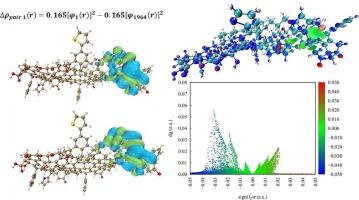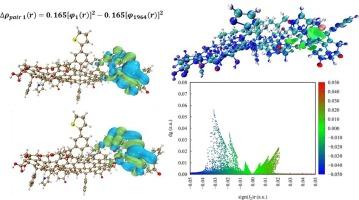离子液体在长焰煤上的吸附和润湿机理:分子水平的结构见解
IF 6.9
2区 材料科学
Q2 CHEMISTRY, PHYSICAL
引用次数: 0
摘要
本研究探讨了ILs阴离子类型和烷基链长度对长焰煤润湿性能的协同调节机制。实验选用C16MImBr、C14MImBr和C16MImCl。结合接触角、表面张力和微观表征,发现C16MImBr表现出最佳的润湿性能,动态CA变化常数增加到3.812。该值是纯水的12倍(0.3245),显著超过C14MImBr和C16MImCl相对纯水的2.271倍和1.623倍。在2 g/L时,ST还原能力排名为C16MImBr >; C14MImBr >; C16MImCl,而C16MImCl的临界胶束浓度最高。微观表征证实,ILs通过煤芳烃核重排生成微孔结构,显著提高了C-O亲水性基团比例,降低了疏水性基团含量。Pearson相关分析显示,C-O与-CH含量呈显著负相关。分子模拟表明,烷基链的生长使C16MImCl的前沿轨道间隙值从3.50 eV降低到3.12 eV,增强了分子活性。弱相互作用分析证实了范德华力在吸附过程中起主导作用。结果表明,阴离子类型对润湿效率的控制优先度高于烷基链长。Br−通过弱氢键促进了液膜的动态扩展,而长链减弱了库仑力的影响,导致C16MImBr的润湿性能明显优于C16MImCl。该研究通过阐明il的结构-润湿性能关系,为开发高效煤尘抑制剂提供了理论依据。对提高工作场所润湿效率、减轻粉尘污染具有重要的实践指导意义。本文章由计算机程序翻译,如有差异,请以英文原文为准。


Adsorption and wetting mechanisms of ionic liquids on long-flame coal: molecular-level structural insights
This study explores the synergistic regulation mechanism of ILs’ anion type and alkyl chain length on the wetting performance of long-flame coal. C16MImBr, C14MImBr and C16MImCl were selected for the experiment. Combining contact angle, surface tension, and microscopic characterization, it was found that C16MImBr exhibited the optimal wetting performance, with a dynamic CA change constant increased to 3.812. This value was 12 times higher than pure water (0.3245), significantly exceeding the 2.271-fold increase of C14MImBr and 1.623-fold increase of C16MImCl relative to pure water. At 2 g/L, the ST reduction capability ranked as C16MImBr > C14MImBr > C16MImCl, while C16MImCl showed the highest critical micelle concentration. Microscopic characterization confirmed that ILs generate microporous structures via rearrangement of coal aromatic nuclei, which significantly increased C-O hydrophilic group proportion and decreased hydrophobic group content. Pearson correlation analysis showed a significant negative correlation between C-O and –CH content. Molecular simulation revealed that alkyl chain growth reduces the frontier orbital gap value from 3.50 eV in C16MImCl to 3.12 eV in C16MImBr, enhancing molecular activity. Weak interaction analysis confirmed that van der Waals forces dominated the adsorption process. Results indicated that anion type exerted higher control priority on wetting efficiency than alkyl chain length. Br− promoted dynamic spreading of liquid film through weak hydrogen bonds, while long chains weaken the influence of Coulomb force, resulting in significantly better wetting performance of C16MImBr than C16MImCl. This research provides a theoretical basis for developing efficient coal dust suppressants by elucidating the structure–wetting performance relationship of ILs. It offers significant practical guidance for enhancing workplace wetting efficiency and mitigating dust pollution.
求助全文
通过发布文献求助,成功后即可免费获取论文全文。
去求助
来源期刊

Applied Surface Science
工程技术-材料科学:膜
CiteScore
12.50
自引率
7.50%
发文量
3393
审稿时长
67 days
期刊介绍:
Applied Surface Science covers topics contributing to a better understanding of surfaces, interfaces, nanostructures and their applications. The journal is concerned with scientific research on the atomic and molecular level of material properties determined with specific surface analytical techniques and/or computational methods, as well as the processing of such structures.
 求助内容:
求助内容: 应助结果提醒方式:
应助结果提醒方式:


